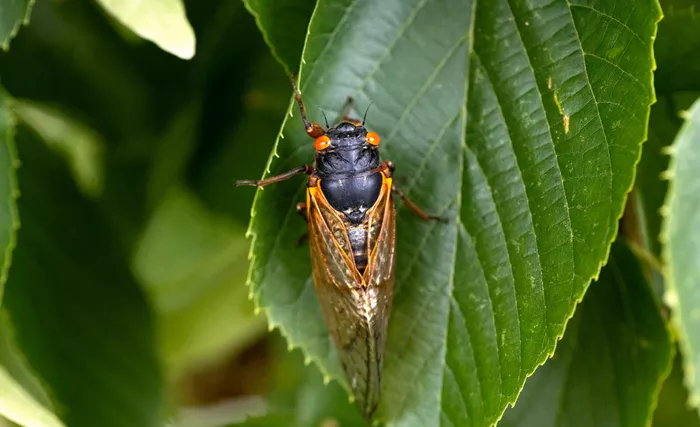Periodical cicadas emerge every 13 or 17 years in large numbers, creating a unique natural event primarily in eastern North America. While these insects do not eat garden plants, flowers, or mature trees, their egg-laying behavior can damage young saplings and small fruit trees.
Female cicadas cut small slits into the bark of branches to lay eggs, which can cause wilting and branch dieback known as “flagging.”
This damage is especially harmful to trees and shrubs that are three years old or younger, potentially leading to disfigurement or structural problems over time.
To protect vulnerable young plants, gardeners should cover small trees and shrubs with fine netting (with holes no larger than ¼ inch) during the cicada emergence period, which lasts about four to six weeks in spring and early summer.
The netting should drape over the canopy and be secured below the lowest branches, but it is not necessary to cover the trunk. Delaying the planting of new young trees until after the cicada emergence can also reduce risk. Pesticides are generally not recommended, as they are less effective and can harm beneficial insects.
Mature plants, annuals, perennials, and edible garden plants are largely unaffected by cicadas, so the main concern is protecting young woody plants from egg-laying damage during the emergence. Proper care and protection will help ensure these plants survive and thrive after the cicada season ends.


